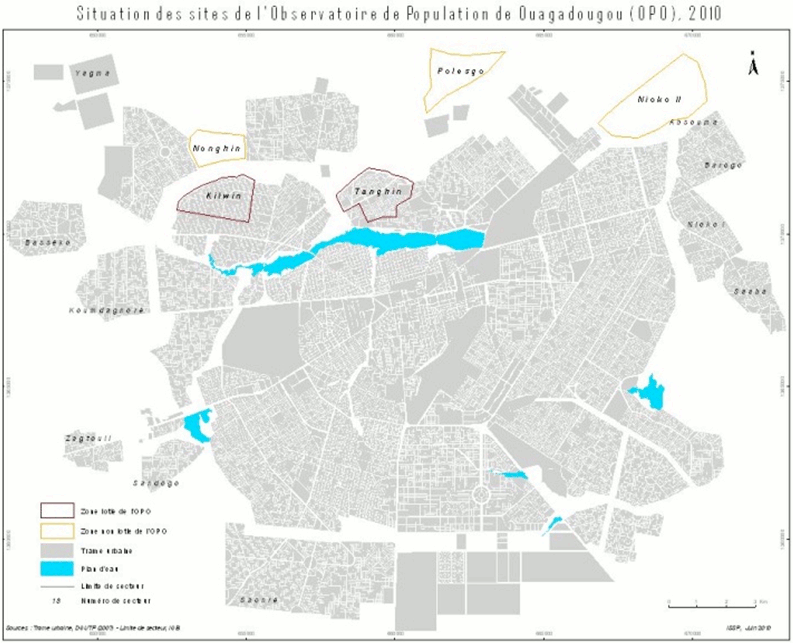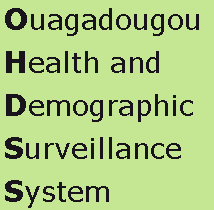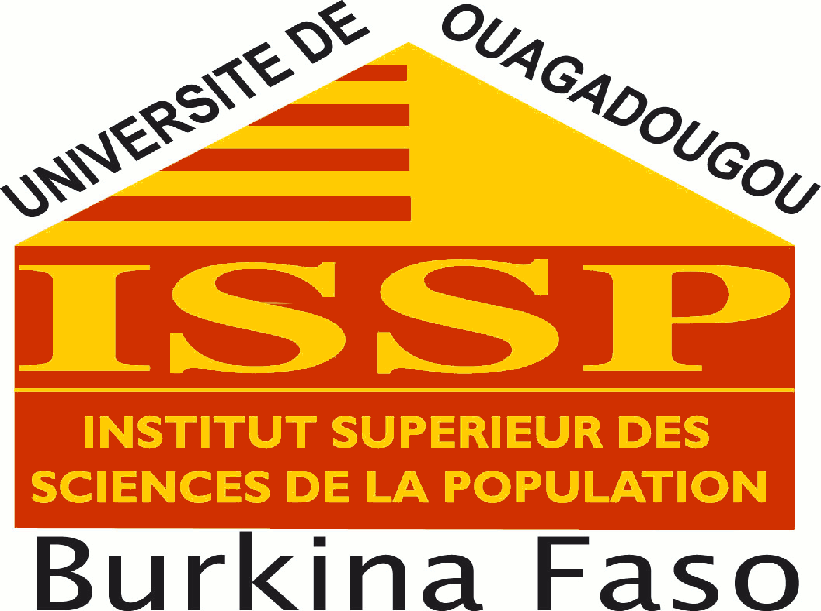The Ouagadougou Health and Demographic Surveillance System – OUAGA HDSS
 The Ouagadougou Health and Demographic Surveillance System (OUAGA HDSS) was created by the Higher Institute of Population Sciences (ISSP ex-UERD) of the University of Ouagadougou in 2002 as a pilot program; the OUAGA HDSS was completed in its present form in 2008. The OUAGA HDSS is a data-generating unit serving all the research units of the ISSP. The OUAGA HDSS is a research platform devised to design and test innovative programs which promote the well-being of vulnerable urban populations.
The Ouagadougou Health and Demographic Surveillance System (OUAGA HDSS) was created by the Higher Institute of Population Sciences (ISSP ex-UERD) of the University of Ouagadougou in 2002 as a pilot program; the OUAGA HDSS was completed in its present form in 2008. The OUAGA HDSS is a data-generating unit serving all the research units of the ISSP. The OUAGA HDSS is a research platform devised to design and test innovative programs which promote the well-being of vulnerable urban populations.
Since 2008, the OUAGA HDSS has periodically collected information in five neighborhoods in the northern outskirts of the capital of Burkina Faso: three unincorporated neighborhoods (Nioko 2, Nonghin and Polesgo) with a total of 45,700 residents in 2012 as well as two incorporated neighborhoods (Kilwin and Tanghin) with 40,700 residents. Data on principal life events (birth, death, marriage, migration and immigration) are collected about once every ten months.
Based on a research project completed between 2008 and 2013, the team worked on a range of problem areas, particularly those concerning urban health: risk factors for chronic illnesses (in particular, diabetes), accidents, mental health, environmental health, age demographics, risk factors for infectious diseases, contraception, etc. Depending on various factors (poverty, education, gender, migration, etc.), smaller or larger disparities were observed.
Eventually, other projects were added to the platform: monitoring typhoid fever, monitoring access to water, links decisions regarding links between fertility and education, testing a target group of the poor and evaluating a program designed to reduce family poverty.



